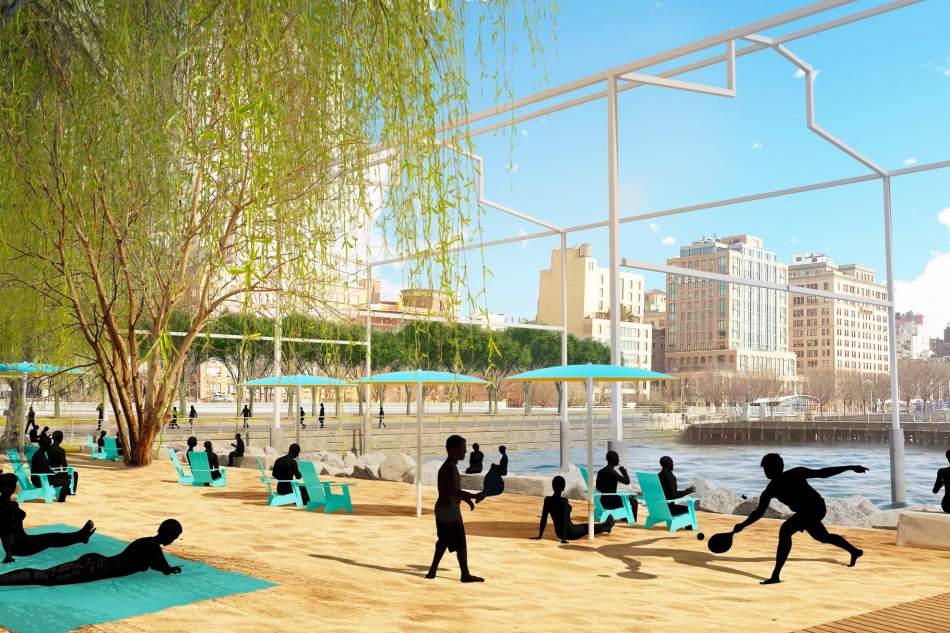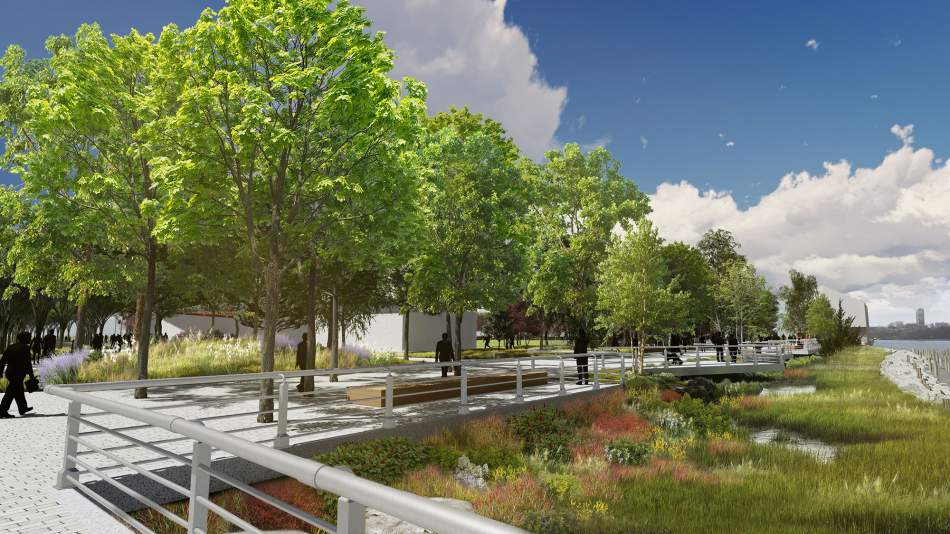Following decades of planning, and nearly 18 months after renderings of the project were first revealed, The Hudson River Park Trust has released three formal requests for proposals seeking contractors to build the $70 million Gansevoort Peninsula. The Trust expects to break ground on the new green space as early as this spring with an opening date penned for 2023.

James Corner Field Operations / Hudson River Park Trust
The 5.5-acre riverside development will stretch from Gansevoort Street to Little West 12th Street—along what used to be 13th Avenue. Designed by James Corner Field Operations, amenities will include kayak access, an open lawn, a large sports field, a dog run, picnic tables with lounge chairs, a salt marsh, habitat enhancements, and most notably a sandy public beach—the first-ever established by the city in Manhattan.
The Whitney Museum of American Art will also install one of the country’s largest public art projects on the southern edge of the park. This will feature an installation by David Hammons called “Day’s End."

James Corner Field Operations / Hudson River Park Trust
“We like being a neighborhood of one of a kind experiences. It’s really exciting,” said Jeffrey LeFrancois, executive director of the Meatpacking Business Improvement District, in a statement. “The Hudson River Park is the West Side’s backyard. I think it’s a draw for New Yorkers and visitors."
Indeed, in addition to counting the first stretch of the High Line as part of its offer, the area has a plethora of public and public-private spaces in construction or recently completed. Among those: Pier 26, a 2.5-acre destination with a lawn, sports court, and a Tide Deck that opened in September 2020; Little Island, a 2.4-acre park and performance venue perched atop a series of undulating pots that emerge from the Hudson River (slated to open this coming spring); Pier 57, a 633,000-square-foot mixed-use development anchored by Google that will generate three acres of open public space; Pier 97, a playground, sunset plaza, and promenade; and finally, a rehauled Chelsea Waterside Park, which will see an updated and expanded ball field and new picnic areas that connect to the popular water playground.
All of this activity amounts to nearly a billion dollars worth of projects. The Gansevoort Peninsula is largely city-funded.
- Meatpacking District (Urbanize NYC)






